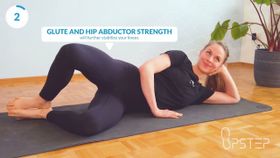Upstep Answers
Our team answers your questions about the causes and treatment of various podiatric conditions, including plantar fasciitis, flat feet, foot pain, and the use of custom orthotics.
Recent Answers
Orthotics & Crocs—a Match Made in Heaven
Most people find Crocs gentle and comfort-giving when worn on their feet for short periods. What may come as a surprise is that Crocs can give even more support when used with orthotics. Crocs have a
Asked 10 months ago
Does Medicaid Cover Custom Orthotics? A Simple Explanation
Experiencing persistent foot pain? You're not alone. Millions of Americans are dealing with foot-related issues that hinder their mobility, and custom orthotics can offer a life-changing solution. How
Asked 2 years ago
Does Medicare Cover Custom Orthotics? A Simple Explanation
Are you a Medicare recipient grappling with foot discomfort? Custom-fitted orthotics might be your path to relief. These specialized shoe inserts can significantly alleviate foot and gait problems, of
Asked 2 years ago
Can Knee Arthritis Cause Calf Pain?
Knee osteoarthritis is a disorder in which cartilage in the knee breaks down or degenerates. Degeneration of the articular cartilage, the flexible, slippery substance that ordinarily shields bones fro
Asked 2 years ago
How Yoga Can Help With Shin Splint Pain Relief
Shin splints is a common overuse injury that often occurs as a result of repetitive physical activity. Shin splints refer to pain along the inner aspect of the shin bone (tibia), usually due to inflam
Asked 2 years ago
Related Articles

Best Exercises for Knee Arthritis to Ease Pain and Stiffness
Babafemi Adebajo
December 6, 2024

Do Bunion Correctors Really Work?
Babafemi Adebajo
December 18, 2024

Best Tailor's Bunion Exercises
Janik Sundstrom
January 6, 2025

Best Insoles for Golf Shoes to Aid With Your Lower Back Pain
Janik Sundstrom
October 3, 2024

Get Back on Track: 6 Strengthening Exercises for Runner's Knee
Babafemi Adebajo
January 25, 2024
Recent Posts
Janik Sundstrom
When Exactly to Replace Your Orthotics—OTC or Custom
Janik Sundstrom
When You Should Worry About a Sprained Ankle
Babafemi Adebajo
7 Best Insoles for Posterior Tibial Tendonitis
Babafemi Adebajo



